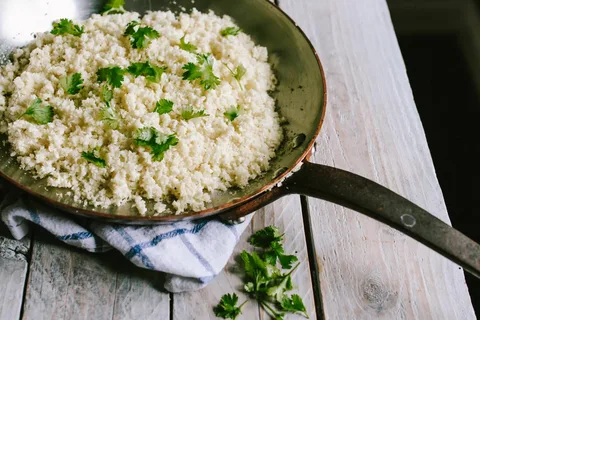Cauliflower rice has gained popularity as a low-carb, gluten-free alternative to traditional rice, offering a lighter and healthier option for those looking to reduce their carbohydrate intake or incorporate more vegetables into their diet. In this comprehensive guide, we will explore the calories and nutrition facts of cauliflower rice, its health benefits, how to make it, and creative ways to incorporate it into your meals.
Calories and Nutrition Facts
One of the main reasons cauliflower rice is favored by health-conscious individuals is its low calorie and carbohydrate content compared to traditional rice. One cup (about 107 grams) of raw cauliflower rice contains approximately 25 calories, 5 grams of carbohydrates, 2 grams of fiber, and 2 grams of protein. In contrast, the same amount of cooked white rice typically contains around 200 calories, 45 grams of carbohydrates, and less than 1 gram of fiber.
Macronutrientzs
Carbohydrates
Cauliflower rice is significantly lower in carbohydrates compared to traditional rice, making it a suitable option for low-carb diets like keto or paleo.
Fiber
Cauliflower rice contains a moderate amount of fiber, which can aid digestion, promote satiety, and regulate blood sugar levels.
Protein: While cauliflower rice is not a significant source of protein, it still provides a small amount, contributing to overall nutrient intake.
Micronutrients
Vitamins
Cauliflower rice is rich in vitamins C, K, and B vitamins such as folate and B6. Vitamin C acts as an antioxidant, supporting immune function and collagen production, while vitamin K is essential for bone health and blood clotting. B vitamins play important roles in energy metabolism and nervous system function.
Minerals
Cauliflower rice contains minerals like potassium, manganese, and magnesium, which are essential for heart health, bone strength, and muscle function.
Health Benefits
Low in Calories and Carbohydrates
Cauliflower rice is a great option for those looking to reduce their calorie and carbohydrate intake, making it suitable for weight management and blood sugar control.
High in Fiber
The fiber content in cauliflower rice promotes digestive health, helps maintain bowel regularity, and may reduce the risk of chronic diseases such as heart disease, diabetes, and certain cancers.
Nutrient-Dense
Cauliflower rice is packed with essential vitamins, minerals, and antioxidants that support overall health and well-being. Incorporating cauliflower rice into your meals can help ensure you meet your daily nutrient requirements.
Versatile and Easy to Prepare
Cauliflower rice is incredibly versatile and can be used as a substitute for traditional rice in a wide range of dishes, including stir-fries, casseroles, salads, and grain bowls. It can be quickly prepared using a food processor or grater and requires minimal cooking time.
How to Make Cauliflower Rice
Making cauliflower rice at home is simple and requires only a few ingredients:
Ingredients
- 1 head of cauliflower
- Olive oil or cooking spray (optional)
- Salt and pepper to taste
Instructions
Wash the cauliflower and remove the leaves and stem.
Cut the cauliflower into florets, discarding any tough stems.
Place the florets in a food processor and pulse until they resemble rice-like grains. Alternatively, you can use a box grater to grate the cauliflower into rice-sized pieces.
Heat a skillet over medium heat and add a small amount of olive oil or cooking spray if desired.
Add the cauliflower rice to the skillet and sauté for 5-7 minutes, stirring occasionally, until tender.
Season with salt and pepper to taste and serve hot.
Creative Ways to Use Cauliflower Rice
Cauliflower rice can be used in a variety of dishes to add texture, flavor, and nutritional value. Here are some creative ways to incorporate cauliflower rice into your meals:
Cauliflower Fried Rice
Use cauliflower rice as a base for traditional fried rice dishes, incorporating vegetables, protein, and seasonings for a flavorful and nutritious meal.
Cauliflower Pizza Crust
Make a low-carb pizza crust using cauliflower rice, eggs, cheese, and seasonings. Top with your favorite pizza toppings for a healthy and satisfying alternative to traditional pizza.
Cauliflower Risotto
Prepare a creamy and indulgent risotto using cauliflower rice instead of Arborio rice. Add broth, Parmesan cheese, and herbs for a delicious and comforting dish.
Cauliflower Sushi Rolls
Use cauliflower rice as a filling for homemade sushi rolls, along with vegetables, avocado, and protein such as cooked shrimp or tofu. Roll tightly and slice into bite-sized pieces for a nutritious and colorful snack or meal.
Cauliflower Rice Stir-Fry
Stir-fry cauliflower rice with mixed vegetables, tofu, or lean protein such as chicken or shrimp for a quick and easy meal that’s packed with flavor and nutrients.
Considerations for Consumption
While cauliflower rice offers numerous health benefits and versatility, there are a few considerations to keep in mind:
Serving Size
Pay attention to portion sizes when consuming cauliflower rice, as it may still contain calories and carbohydrates that can add up if consumed in large quantities.
Sodium Content
Be mindful of added sodium when using pre-packaged or seasoned cauliflower rice products. Opt for plain, unseasoned varieties whenever possible and season to taste with herbs and spices.
Allergies and Sensitivities
Individuals with allergies or sensitivities to cruciferous vegetables like cauliflower should avoid consuming cauliflower rice or use alternative options such as broccoli or carrot rice.
Conclusion
Cauliflower rice is a nutritious, low-calorie, and versatile alternative to traditional rice, offering numerous health benefits and culinary possibilities. With its high fiber content, essential vitamins and minerals, and low carbohydrate profile, cauliflower rice is suitable for a wide range of dietary preferences and restrictions, including low-carb, gluten-free, and vegetarian diets. By incorporating cauliflower rice into your meals, you can enjoy delicious and satisfying dishes while supporting your overall health and well-being. Whether you’re looking to manage your weight, improve your digestion, or simply add more vegetables to your diet, cauliflower rice is a valuable addition to any kitchen repertoire.
- Sweet and Guilt-Free: My Delightful Experience with JustCBD UK’s Sugar-Free CBD Gummies - August 6, 2024
- Embark on a Cosmic Flavor Adventure: My Review of Melo’s THC Beverages! - May 20, 2024
- Benefits of Chickweed Supplements - April 2, 2024

